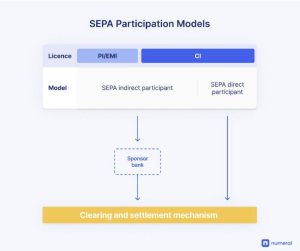In France, only eight institutions are currently direct participants in clearing systems: La Banque Postale, BNP Paribas, BPCE Payment Services, Societe Generale, Crédit Mutuel, Crédit Mutuel Arkéa, Groupe Crédit Agricole, Memo Bank and DELUBAC & CIE (allowing them to onboard riskier customers). All the other institutions pass their flows through these banks.
I had the opportunity to talk to a few banks or fintechs that were thinking about becoming direct participants in order to free themselves from a banking partner. The main motivations mentioned:
– Ownership of infrastructure, with lower unit costs per payment
– Greater freedom in risk management, without dependence on a third-party regulated institution
– Strengthening of positioning, with more latitude on the product offer
But there are also disadvantages, which have led some banks to become indirect participants again:
– Significant investments: technical connection, membership fees, annual costs, compliance, qualified human resources
– Technical and regulatory complexity, which can impact technological, human and product agility
I let you imagine the state of mind of the treasurer who is told that his institution is going to become a direct participant: he and his team will now have to manage the compensation with much better control… but without a safety net, since there will no longer be a bank behind them to support them.
On paper, direct participation may seem accessible in a business plan. But in my opinion, it is better to wait if you do not meet these criteria:
– More than 1,000 employees
– Secured revenue of more than €200 million
– Already very solid in-house business expertise
In short, in France, I see only one, and even then:)
In France, I would not yet advise payment or electronic money institutions to get started, even if PSD3 seems to be paving the way.

Thanks to Alexandre Hamroun Candelier :
https://www.linkedin.com/in/alexandre-hamroun-candelier-88ab5894/
from Numeral :
https://www.linkedin.com/company/joinnumeral/

